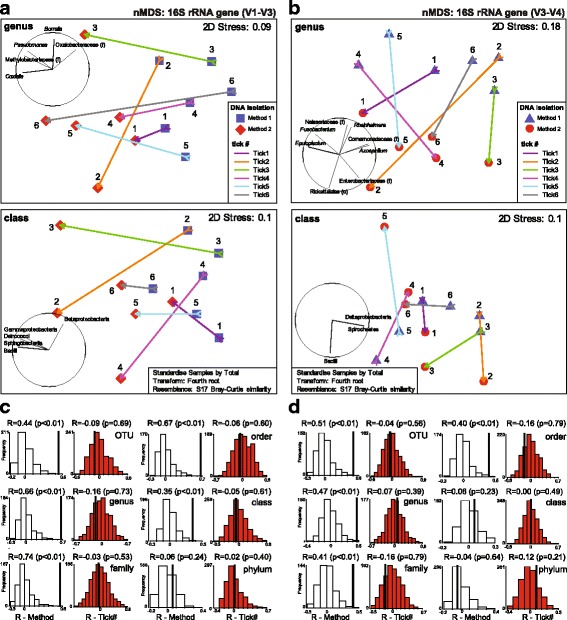Fig. 4.

Multivariate analysis of the bacterial profiles of the Goanna tick (Bothriocroton undatum). Non-metric MDS ordination (nMDS) plots for bacterial abundance and analysis of similarity (ANOSIM). The ordinations are from abundances at the genus or class level of (a) 124 OTUs (V1-V3 16S rRNA gene diversity profiling assay) and (b) 126 OTUs (V3-V4 16S rRNA gene diversity profiling assay), with resulting stress values of (a) 0.09 (genus), 0.10 (class) and (b) 0.18 (genus), 0.10 (class). Superimposed are vector plots for taxa (correlation > 0.8) displaying observed responses to the gradient [direction reflects the Pearson correlation of transformed abundances, length represents the multiple correlation coefficient from the linear regression on the ordination points (circle is a correlation = 1)]. Individual halved ticks are joined by solid lines to identify the community differences using nMDS. Histograms of permutated distributions of the test statistics R (up to 999 permutations, ANOSIM; null hypothesis - is no significant difference among communities, P < 0.05) with observed R (bold) at different taxonomic level evaluated for DNA isolation method (transparent) and tick (red) (c, d)
